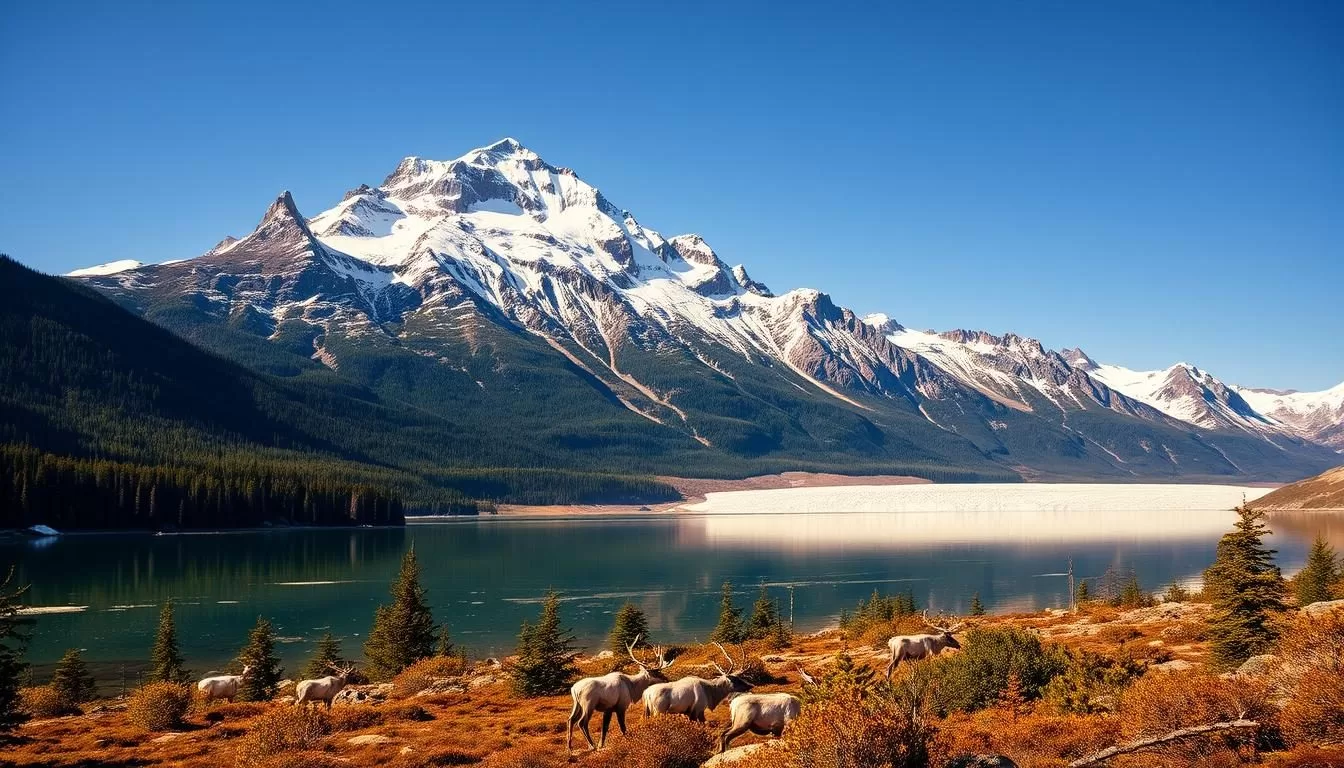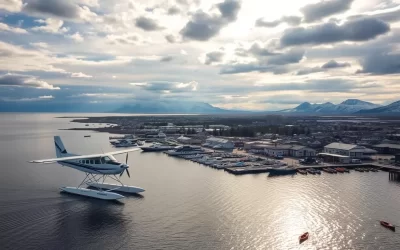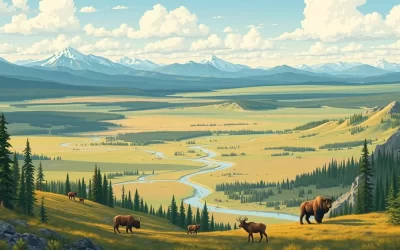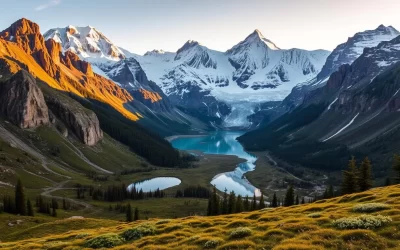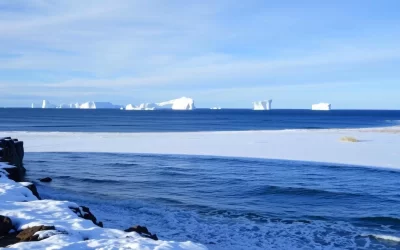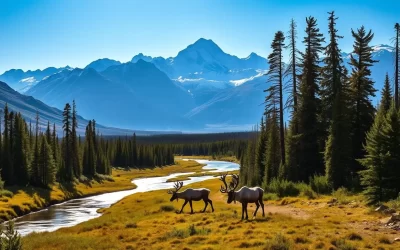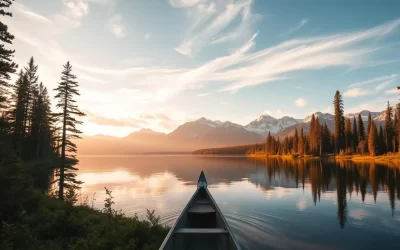Welcome to Fort Good Hope, a charter community nestled on the banks of the Mackenzie River in the Sahtu region. With a population of 570, mostly indigenous, this remote area offers an authentic northern experience.
You are about to embark on a journey to a place where traditional lifestyles are still prevalent, and the natural beauty is breathtaking. The Sahtu region is considered the beating heart of the North, and Fort Good Hope serves as the perfect gateway to experience it.
This comprehensive guide will walk you through the unique combination of natural wonders, cultural experiences, and outdoor adventures that await you in this northern frontier.
Discovering Fort Good Hope: Gateway to the Sahtu Region
The Sahtu region’s gateway, Fort Good Hope, is a fascinating place to explore, rich in history and culture. As a charter community established in 1805 as a fur trading post by the Northwest Company, it offers a unique window into the traditional lifestyle of the indigenous people.
Historical Background of Fort Good Hope
Fort Good Hope’s rich history dates back to its establishment in 1805. It is one of the oldest settlements in the Northwest Territories, playing a significant role in the fur trade era. The community has evolved into a vibrant First Nations settlement, predominantly Sahtu Dene and Métis.
Getting to Fort Good Hope
Accessing Fort Good Hope requires some planning. You can reach this remote community by air from Norman Wells year-round or via winter road during the colder months. The journey offers glimpses of the vast, untouched wilderness that characterizes this part of the world, making it a memorable experience.
Understanding the community’s historical context will enhance your appreciation of the cultural experiences and natural attractions you’ll encounter during your visit to this area.
Explore the Stunning Natural Landscape
Fort Good Hope is a nature lover’s paradise, with its vast and untouched wilderness waiting to be explored. The area is characterized by its pristine natural beauty, with numerous trails that cater to different interests and fitness levels.
The Old Baldy Trail Experience
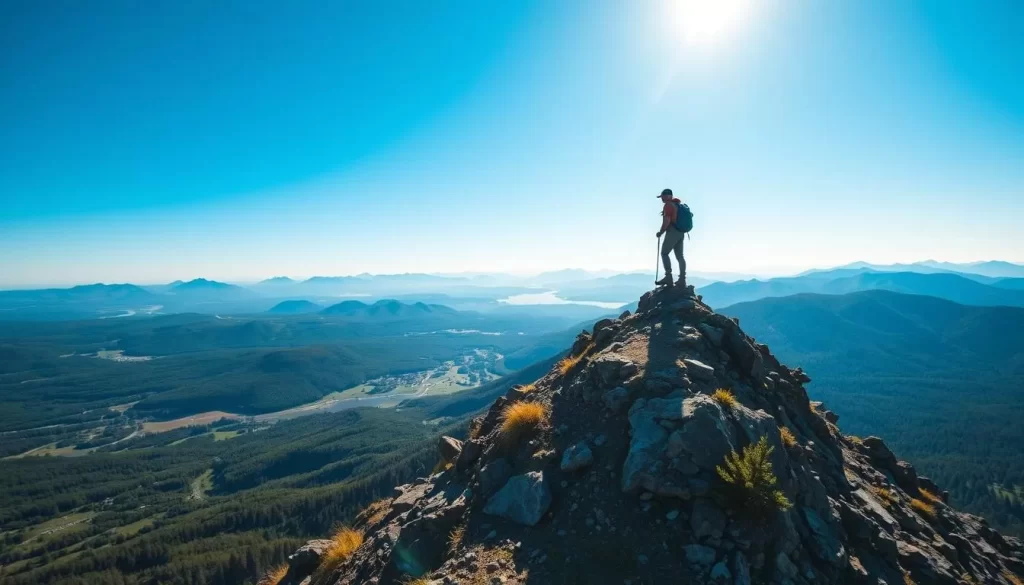
The Old Baldy Trail is a 5 km network that takes you up to the top of a long esker, providing a stunning view of the Northwest Territories landscape. This accessible trail gives credit to the area’s unique glacial geography, offering perfect photo opportunities.
Rapids Trail Along the Mackenzie River
For a more challenging adventure, the 20 km Rapids Trail takes you along the banks of the Mackenzie River to Tsintu River, also known as Bluefish Creek. This trail allows you to witness the power of northern waterways and possibly spot local wildlife.
Fred Kelly Express Ski Trail
The Fred Kelly Express Ski Trail, named after one of the Northwest Territories’ first Olympians, provides a gentler option for exploration. This trail is perfect for cross-country skiing and offers a unique way to experience the area’s wilderness during the winter months.
These trails change dramatically with the seasons, offering a diverse range of experiences throughout the year. In the summer, the trails are lush and green, with opportunities for berry-picking. In the winter, they transform into snowy corridors perfect for cross-country skiing and snowshoeing.
Local residents use these paths for traditional activities like trapping and berry harvesting, giving you a glimpse into the subsistence lifestyle that continues in this remote area. The network of winter roads and trails around Fort Good Hope connects visitors to hidden lakes and secluded spots that few outsiders ever get to experience, unlike the more developed park systems in southern Canada.
The Magnificent Ramparts: Fort Hope, Northwest Territories’ Best Things to Do
As you explore the natural wonders of Fort Good Hope, you’ll discover the breathtaking Ramparts, a geological marvel that showcases the raw power of the Mackenzie River. The Ramparts represent one of the most spectacular natural features in the Northwest Territories and should be at the top of your must-see list when visiting Fort Good Hope.
Geological Significance of the Ramparts
The Ramparts are a remarkable geological formation that occurs where the mighty Mackenzie River—normally 2 kilometers wide—suddenly narrows to just over 100 meters, creating a dramatic gorge flanked by 40-meter limestone cliffs. This natural wonder has earned Fort Good Hope its traditional Dene name “Radeyilikoe,” meaning “Where the Rapids Are.” Visiting the Ramparts gives you a window into the powerful geological forces that have shaped this wilderness landscape over millennia, rivaling the impressive features found in many national park settings across Canada.
Viewing Points and Photography Opportunities
Photography enthusiasts will find endless opportunities to capture the dramatic contrast between the rushing waters and towering cliffs, with changing light conditions throughout the day creating different moods and perspectives. During winter months, sections of the rapids may freeze, creating spectacular ice formations that glisten in the low Arctic sun—and on clear nights, you might even catch the northern lights dancing above this natural wonder. The Ramparts stand as a reminder of the raw, untamed nature of Canada’s north, offering visitors a glimpse into a world few get to experience, earning credit as one of the most impressive natural features in the Northwest Territories.
Local guides can provide valuable context about the cultural and historical significance of the Ramparts, adding depth to your appreciation of this unique natural feature. As you explore the Ramparts, you’ll gain a new window into the region’s rich history and culture, and you’ll surely earn credit for experiencing one of Canada’s most remarkable natural wonders.
Cultural Treasures and Historic Sites
Immerse yourself in the cultural treasures of Fort Good Hope, a place where history and tradition come alive. Fort Good Hope offers a unique cultural experience, with its historic sites and traditional practices providing a window into the region’s rich past.
Our Lady of Good Hope Church
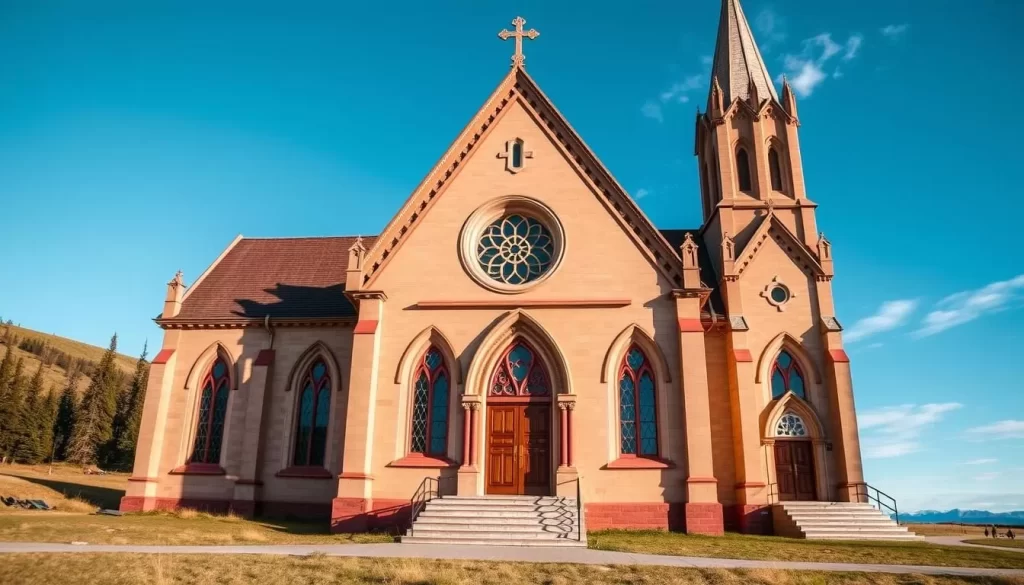
Our Lady of Good Hope Church is a stunning example of 19th-century Gothic Revival architecture, built between 1865 and 1885 by Oblate missionaries. Designated as a National Historic Site in 1977, it is one of the oldest permanent structures in Northern Canada. The church features breathtaking interior murals painted by Father Emile Petitot in the 1870s, which seem to glow like the northern lights when sunlight filters through the windows.
The church represents an important part of the region’s history, showcasing the meeting of European and First Nations cultures near the Arctic Circle. It gives visitors insight into the complex colonial history of Canada’s north and is an absolute must-see.
Indigenous Art and Crafts
Beyond the church, you’ll discover a vibrant indigenous art scene where local Sahtu Dene and Métis artists create stunning works that reflect their deep connection to the land and traditional ways of life. These artisans produce intricate beadwork, moosehide crafts, carvings, and paintings that tell stories of the people and places that make this region unique.
Many artists draw inspiration from the surrounding wilderness, incorporating motifs of wildlife, landscapes, and celestial phenomena like the northern lights into their work. Purchasing authentic indigenous art directly from local creators not only provides you with a meaningful souvenir but also supports the continuation of traditional practices and gives credit to the artists preserving their cultural heritage.
The community often hosts cultural demonstrations where you can learn about traditional crafting techniques and the significance behind different artistic elements in this remote corner of the world.
Experience Traditional Indigenous Lifestyle
By visiting Fort Good Hope, you’re stepping into a world where traditional indigenous practices are still alive. The community, with its mostly indigenous population of Sahtu Dene and Métis, offers a unique opportunity to connect with the local culture.
Seasonal Activities with the Sahtu Dene and Métis
The locals in Fort Good Hope engage in seasonal activities that have been part of their lifestyle for generations. You can participate in ice fishing on frozen lake during winter or berry harvesting in summer under proper guidance. This experience gives you a window into the traditional knowledge that remains vital for survival near the Arctic Circle.
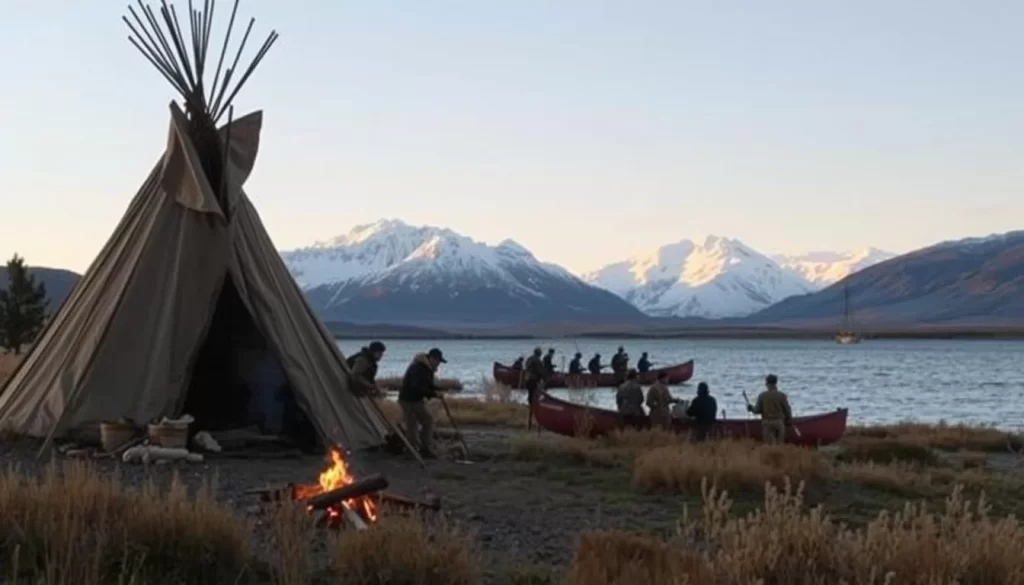
Local Festivals and Community Events
Fort Good Hope hosts various cultural celebrations, including the Great Northern Arts Festival, which showcases traditional music, dance, storytelling, and food. These events give credit to the rich cultural heritage of the community. You can also be a part of community feasts featuring traditional foods like caribou and whitefish, prepared using time-honored methods. Participating in these events respectfully offers authentic cultural exchanges, creating meaningful connections with the locals in this part of the Northwest Territories.
Practical Tips for Visitors
As you prepare for your adventure in Fort Good Hope, Northwest Territories, here are some valuable insights to keep in mind. Planning your trip requires careful consideration of seasonal factors that affect travel conditions and activities.
Best Time to Visit Fort Good Hope
The best time to visit depends on your preferences. Summer (June-August) offers 24-hour daylight and comfortable temperatures, ideal for hiking and fishing. Winter (December-March) brings opportunities to witness the spectacular northern lights (aurora borealis) and experience traditional winter activities.
Accommodation and Dining Options
Accommodation options are limited; you might stay at a small guesthouse, arrange homestays with locals, or camp in designated areas. Dining establishments are scarce, so come prepared to be self-sufficient or arrange meals through your accommodation. Make sure to check transportation schedules in advance, as access is by air from Norman Wells or via winter road during colder months.
Conclusion
Your adventure in Fort Good Hope is a gateway to experiencing the natural beauty and cultural richness of the Northwest Territories. As you explore this region, you’ll discover breathtaking landscapes, from the remote wilderness of Nahanni National Park Reserve with its spectacular Virginia Falls to the unique salt plains of Wood Buffalo National Park.
The Dempster Highway offers additional adventures, connecting to Dawson City and providing access to some of northern Canada’s most spectacular scenery. Don’t miss witnessing the northern lights (aurora borealis), a natural phenomenon that makes the Northwest Territories one of the world’s best viewing destinations.
With its rich indigenous cultures, warm northern hospitality, and stunning landscapes, Fort Good Hope and the broader Northwest Territories offer an unforgettable experience. You’ll leave with memories to last a lifetime and a deeper appreciation for Canada’s northern frontier.
The above is subject to change.
Check back often to TRAVEL.COM for the latest travel tips and deals.
